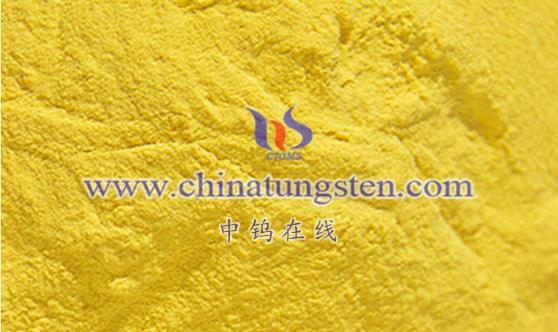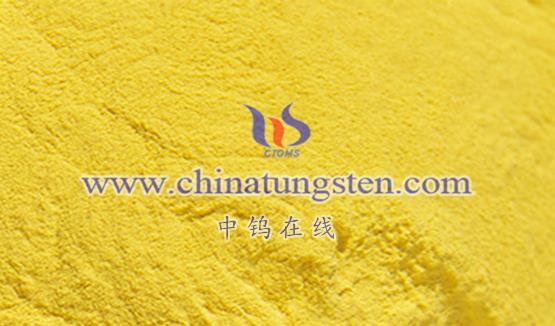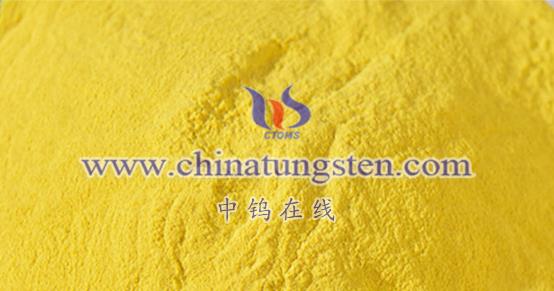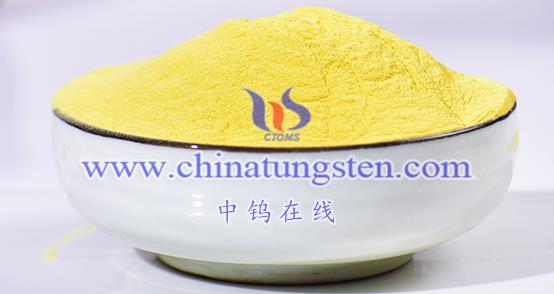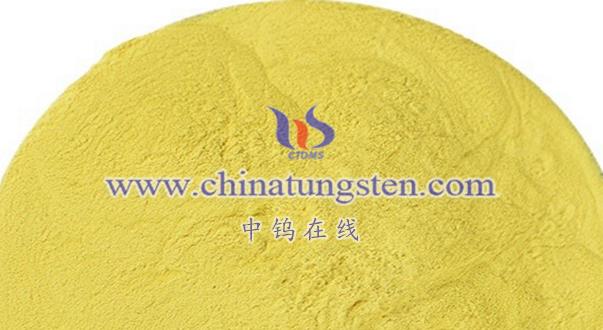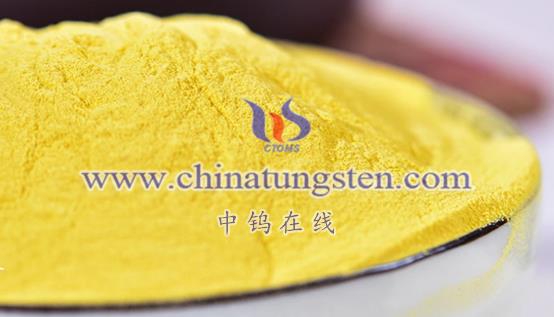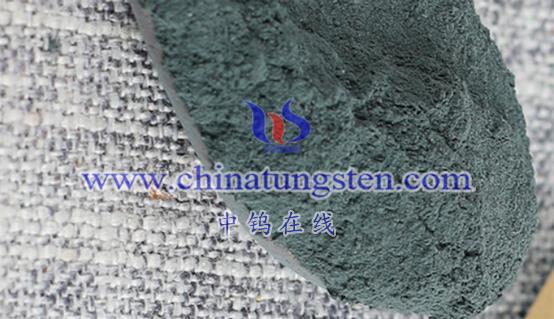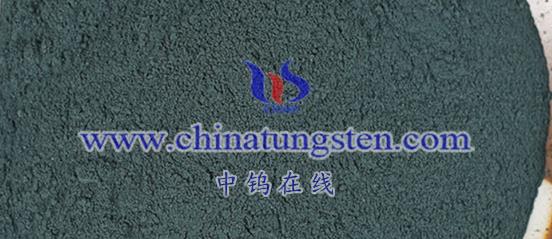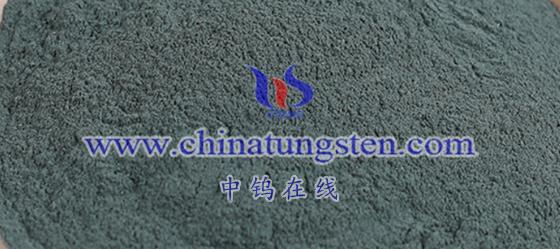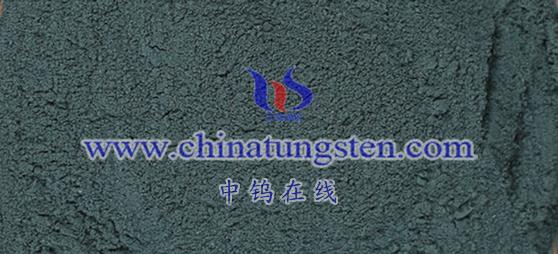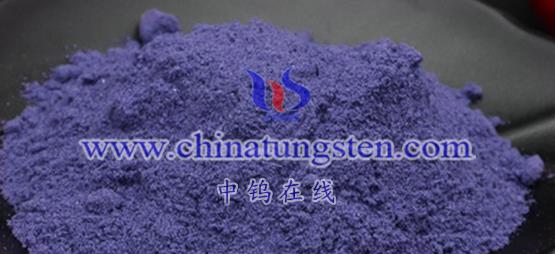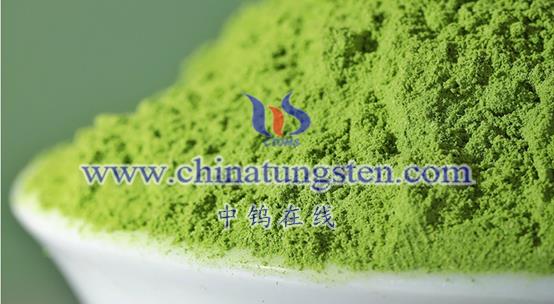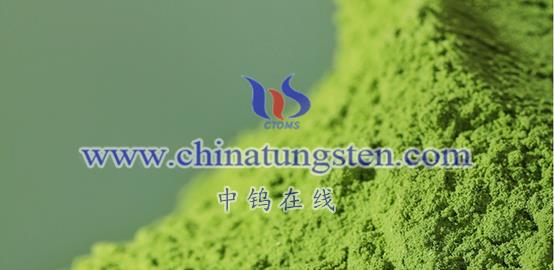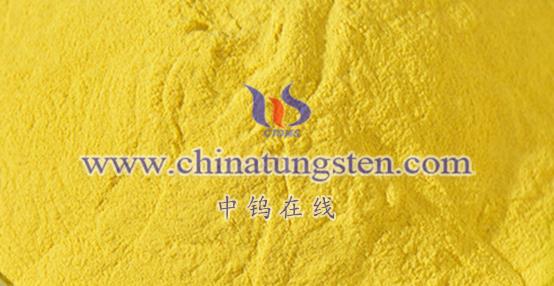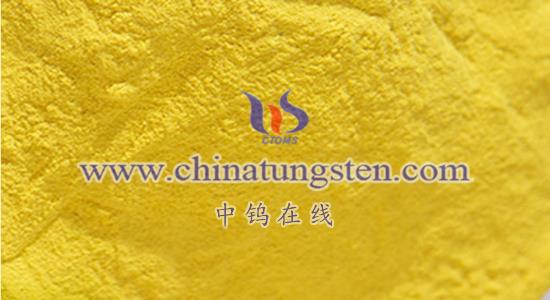
Nano tungsten oxide particles are primarily composed of oxides of tungsten and oxygen, with distinct chemical compositions. Here are some of the main forms:
- Primary Chemical Compositions of Nano Tungsten Oxide Particles
- Tungsten Trioxide (WO3)
This is the most common and extensively researched form of nano tungsten oxide particles. WO3 typically appears as a pale yellow, orthorhombic crystalline powder, and is often referred to as yellow tungsten. WO3 is insoluble in water, soluble in alkalis, and slightly soluble in acids. In practical applications, yellow tungsten oxide is used in high-melting-point alloys, hard alloys, tungsten filaments, and fireproof materials. - Tungsten Dioxide (WO2.x, where x < 3)
This includes forms like blue tungsten (WO2.9) and violet tungsten (WO2.72 or W18O49).- Blue Tungsten (WO2.9): This dark blue compound contains mixed valence states of tungsten (W(Ⅵ) and W(V)), with a typical composition of WO2.88 to WO2.92. It may also contain small amounts of NH3 (0.3%-0.8%).
- Violet Tungsten (WO2.72 or W18O49): With its unique crystal structure and excellent properties, violet tungsten is widely used in producing fine tungsten powder and fine tungsten carbide powder. Violet tungsten particles are needle- or rod-shaped loose particle clusters, which offer a large mesopore volume and small micropore volume, advantageous for hydrogen reduction to produce ultra-fine tungsten powder.
- Cesium-Doped Tungsten Oxide (Cs0.33WO3)
This is a specialized type of nano tungsten oxide particle, modified by the incorporation of cesium. It is primarily used as an infrared absorber in applications requiring specific infrared absorption properties.
- Preparation Methods for Nano Tungsten Oxide Particles
There are various methods to prepare nano tungsten oxide particles, including but not limited to:
- Ammonium Tungstate Method
This process involves the alkaline decomposition, neutralization, and acid decomposition of tungsten concentrate, followed by calcination to obtain tungsten trioxide. - Hydrochloric Acid Decomposition of Tungstate
Saturated solutions of tungstate are heated and then added to boiling concentrated hydrochloric acid. After filtration, washing, drying, and calcination, tungsten trioxide is produced. - Thermal Decomposition of Ammonium Paratungstate
Purified ammonium paratungstate is heated to a specific temperature, causing ammonia to volatilize, which yields tungsten trioxide.
III. Application Fields of Nano Tungsten Oxide Particles
Nano tungsten oxide particles exhibit unique physical and chemical properties, making them applicable in various fields:
- Photocatalysis
Due to their large surface area and efficient electron transport properties, nano tungsten oxide particles are excellent photocatalysts, suitable for applications in water purification and waste gas treatment. - Electrocatalysis
In the field of electrochemistry, nano tungsten oxide particles show promising catalytic performance. - Sensors
Owing to their unique electrical properties, nano tungsten oxide particles can be used in various sensor applications. - Energy Storage
Nano tungsten oxide particles also hold potential for applications in energy storage, such as lithium batteries.
In summary, the chemical composition of nano tungsten oxide particles includes primarily tungsten trioxide (WO3), tungsten dioxide forms (such as WO2.9 and WO2.72), and cesium-doped tungsten oxide (Cs0.33WO3). These different compositions exhibit variations in preparation methods, physical and chemical properties, and application fields, allowing for a wide range of functional uses across industries.
More details of tungsten oxide product, please visit website: tungsten-oxide.com
Please contact CHINATUNGSTEN for inquiry and order of tungsten oxide:
Email: sales@chinatungsten.com
Tel.: 86 592 5129595
